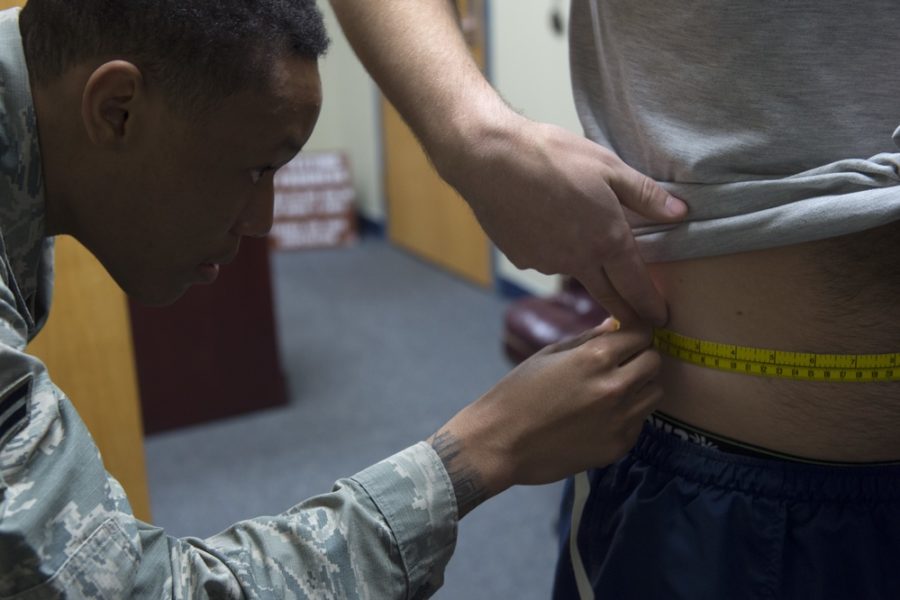Editor’s note: This story was updated at 11 a.m. Jan. 10 with additional information from the Air Force.
Goodbye tape test, hello waist-height ratio.
The Department of the Air Force unveiled its new body composition program Jan. 9, more than two years after dropping the unpopular abdominal circumference measurements from fitness assessments. Now, instead of getting a point total based on waist measurements, Airmen and Guardians will divide their waist by their height in inches. For example, an Airman who stands 69 inches tall and has a waist of 36 inches would have a waist-to-height ratio of 0.52.
According to a DAF release, any ratio below 0.55 is deemed a low or moderate risk, meeting the standard. Ratios equal to or above 0.55 will be considered a high risk and out of standard.
When waist-to-height ratio scoring chart first leaked online in February 2022, it showed 0.55 ratios and above to be high risk. The Air Force surgeon general’s office said that chart was “pre-decisional.” That chart also noted a difference between low- and moderate-risk ratios, while the DAF release did not define the distinction.
The leaked chart also showed a narrow range of scores—below a ratio of 0.40—that were not given a designation of low, moderate, or high risk. In order to have such a ratio, a service member would have to be relatively tall with a very small waist. An Air Force spokeswoman said there would be no high-risk designation for very low waist-height ratios.
For service members deemed high risk, a yearlong “informal, self-directed Body Composition Improvement Program” is in store, including a referral for medical evaluation and “assessment for additional risk factors.” There are are no disciplinary implications during this period, the Air Force said, but if the member is still not meeting standards after a year, a mandatory formal self-directed program will be imposed.
“That may result in consideration for administrative action, including separation for continued failures,” according to the Air Force release.
“The goal of the new program is to empower Airmen to take charge of their health and fitness through lifestyle enhancement to optimize readiness,” said Lt. Gen. Caroline Miller, deputy chief of staff for manpower, personnel, and services, in a statement.
In the Space Force, high-risk Guardians will be referred to Guardian Resilience Teams, including “human performance subject matter experts with different specialties,” such as preventive care, performance optimization, mental health care, and spiritual assistance. This policy follows the Space Force’s holistic health program, which includes a fitness program without annual tests.
The Air Force stopped using waist measurements as part of its fitness test in 2020, amidst the pause in PT testing at the height of the COVID-19 pandemic. The department noted at the time, however, that Pentagon policy still required the recording of body composition. In November 2021, the Air Force surgeon general settled on waist-to-height ratio as the service’s new measurement method, and in March 2022, DOD changed its policy to give the services more latitude in measuring body composition.
Critics of the old waist measurements said the measurement was a simplistic means of guessing at individuals’ bodyfat percentage. Body builders in particular suffered under a system in which they could excel in the tests only to be suspect based on the measuring tape. The new body composition program is separate from the PT tests, erasing that connection.
The new assessments will begin in April.
